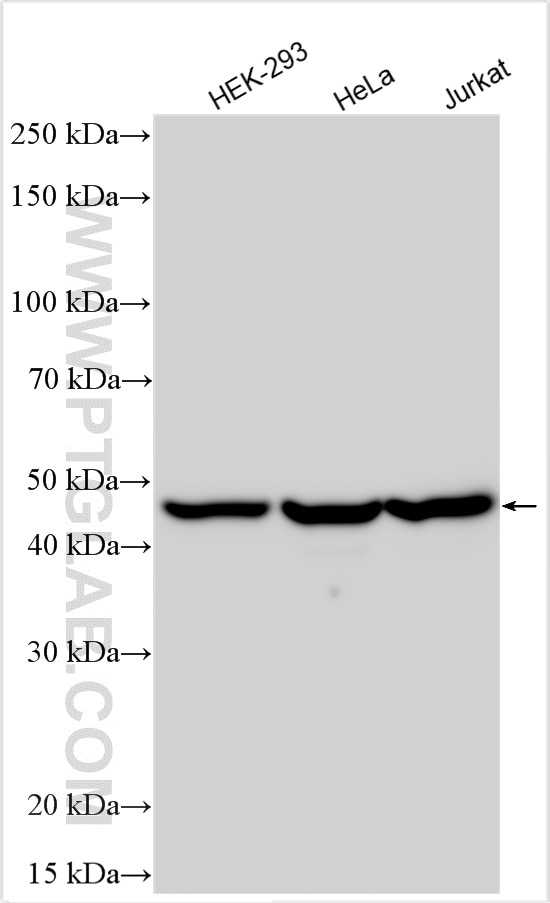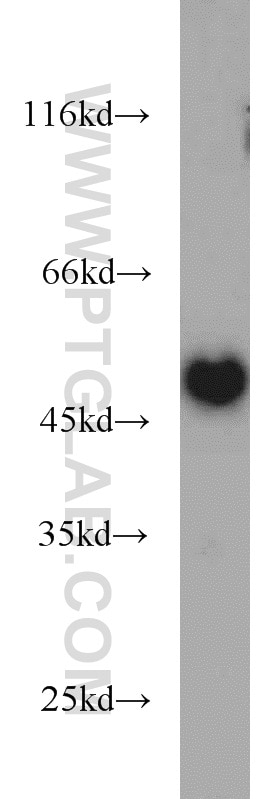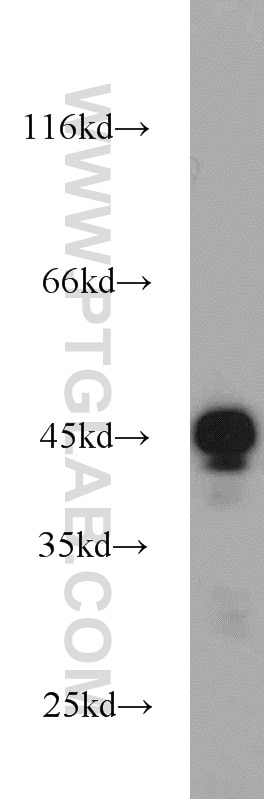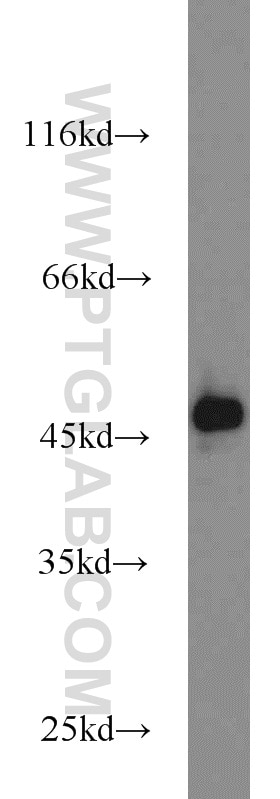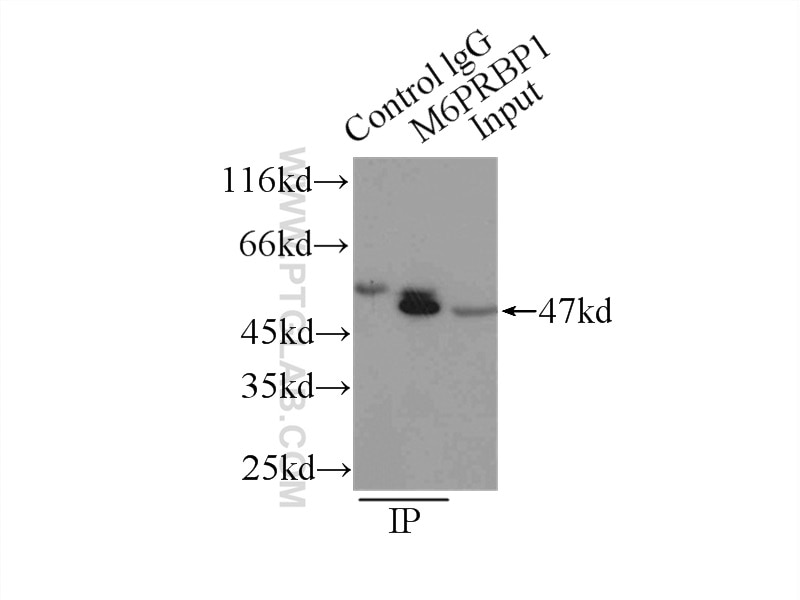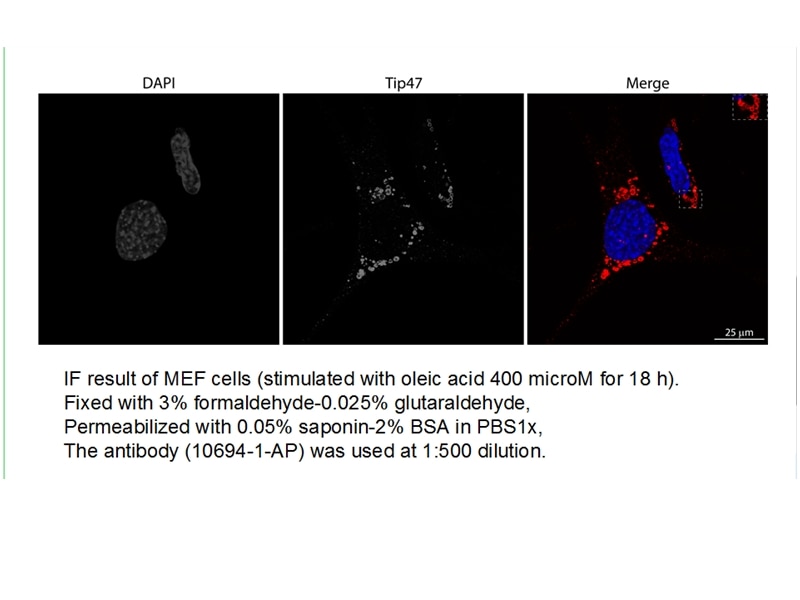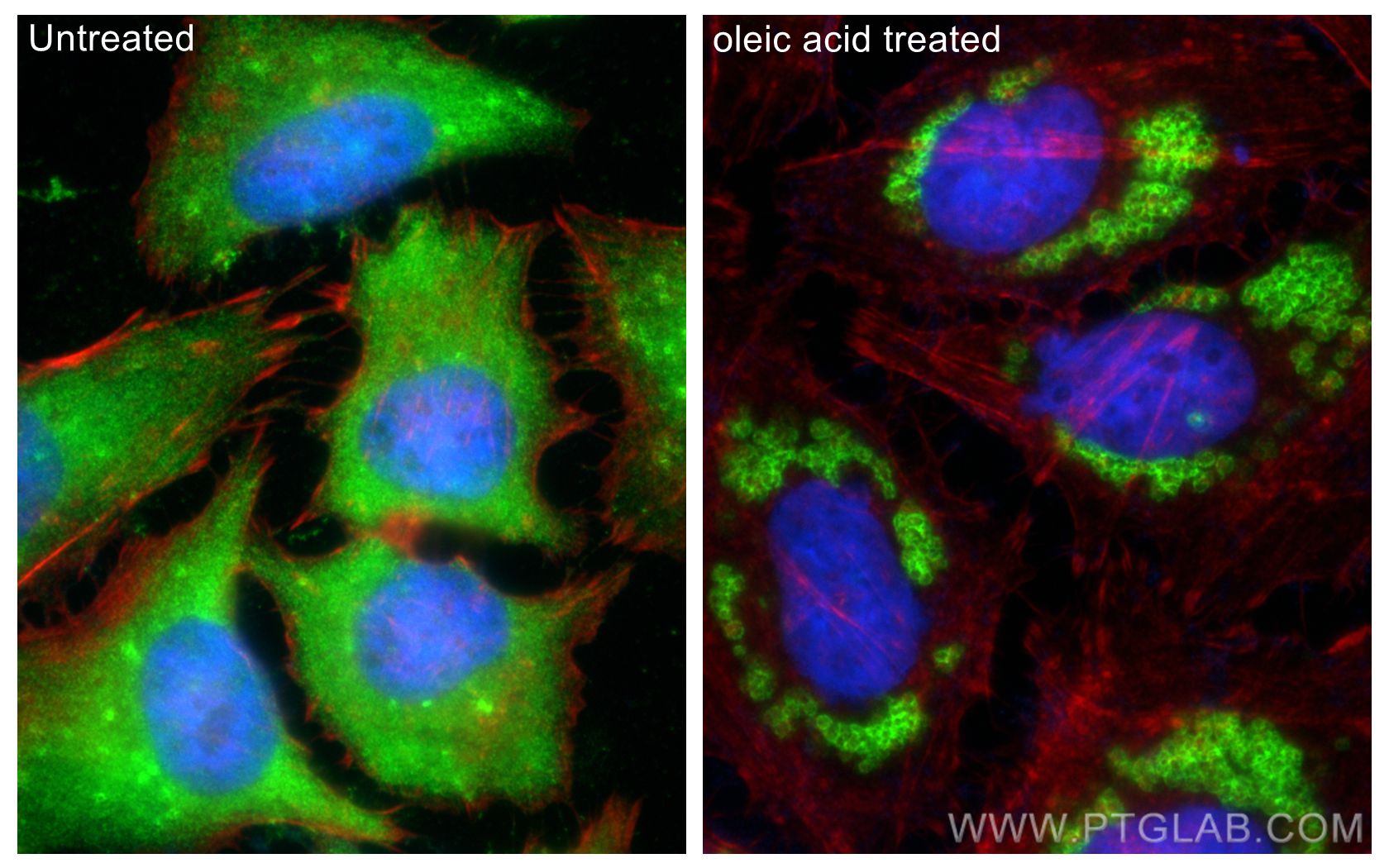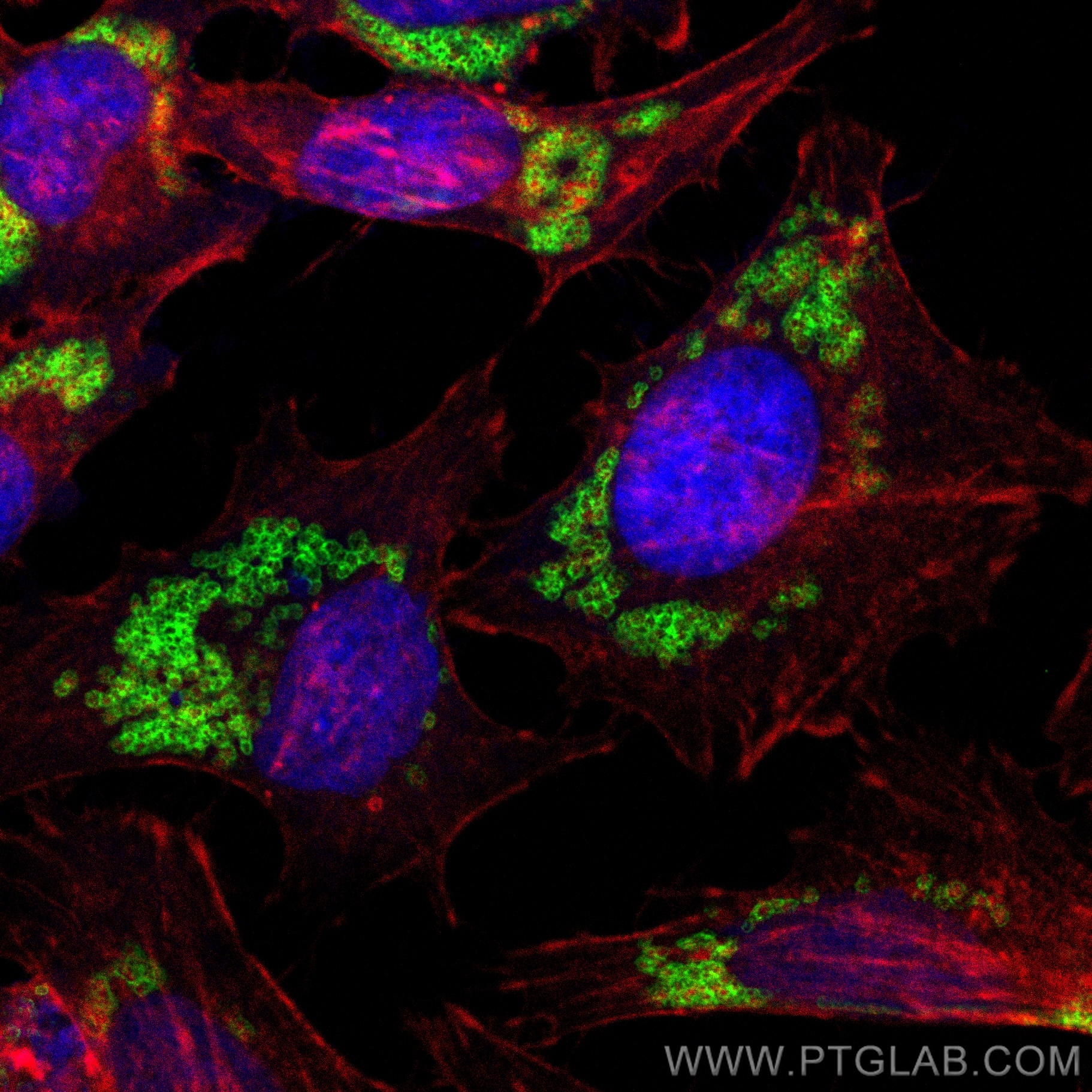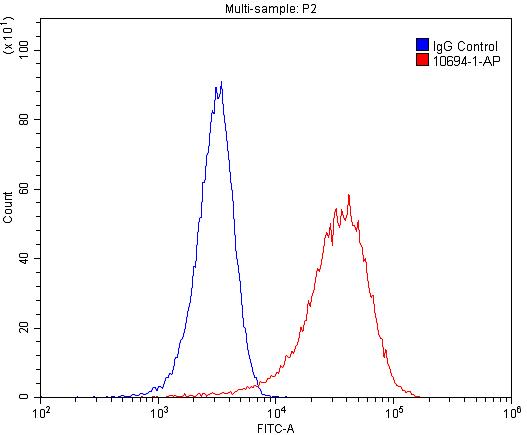Tested Applications
| Positive WB detected in | HEK-293 cells, Jurkat cells, HeLa cells |
| Positive IP detected in | HeLa cells |
| Positive IF/ICC detected in | MEF cells, oleic acid treated HeLa cells |
| Positive FC (Intra) detected in | HeLa cells |
Recommended dilution
| Application | Dilution |
|---|---|
| Western Blot (WB) | WB : 1:2000-1:10000 |
| Immunoprecipitation (IP) | IP : 0.5-4.0 ug for 1.0-3.0 mg of total protein lysate |
| Immunofluorescence (IF)/ICC | IF/ICC : 1:20-1:200 |
| Flow Cytometry (FC) (INTRA) | FC (INTRA) : 0.20 ug per 10^6 cells in a 100 µl suspension |
| It is recommended that this reagent should be titrated in each testing system to obtain optimal results. | |
| Sample-dependent, Check data in validation data gallery. | |
Published Applications
| KD/KO | See 1 publications below |
| WB | See 23 publications below |
| IHC | See 3 publications below |
| IF | See 10 publications below |
Product Information
10694-1-AP targets Perilipin 3/TIP47 in WB, IHC, IF/ICC, FC (Intra), IP, ELISA applications and shows reactivity with human samples.
| Tested Reactivity | human |
| Cited Reactivity | human, rat, goat |
| Host / Isotype | Rabbit / IgG |
| Class | Polyclonal |
| Type | Antibody |
| Immunogen |
CatNo: Ag1028 Product name: Recombinant human M6PRBP1 protein Source: e coli.-derived, PGEX-4T Tag: GST Domain: 134-434 aa of BC007566 Sequence: EMVSSAKDTVATQLSEAVDATRGAVQSGVDKTKSVVTGGVQSVMGSRLGQMVLSGVDTVLGKSEEWADNHLPLTDAELARIATSLDGFDVASVQQQRQEQSYFVRLGSLSERLRQHAYEHSLGKLRATKQRAQEALLQLSQALSLMETVKQGVDQKLVEGQEKLHQMWLSWNQKQLQGPEKEPPKPEQVESRALTMFRDIAQQLQATCTSLGSSIQGLPTNVKDQVQQARRQVEDLQATFSSIHSFQDLSSSILAQSRERVASAREALDHMVEYVAQNTPVTWLVGPFAPGITEKAPEEKK Predict reactive species |
| Full Name | mannose-6-phosphate receptor binding protein 1 |
| Calculated Molecular Weight | 47 kDa |
| Observed Molecular Weight | 47 kDa |
| GenBank Accession Number | BC007566 |
| Gene Symbol | TIP47/PLIN3 |
| Gene ID (NCBI) | 10226 |
| RRID | AB_2297252 |
| Conjugate | Unconjugated |
| Form | Liquid |
| Purification Method | Antigen affinity purification |
| UNIPROT ID | O60664 |
| Storage Buffer | PBS with 0.02% sodium azide and 50% glycerol, pH 7.3. |
| Storage Conditions | Store at -20°C. Stable for one year after shipment. Aliquoting is unnecessary for -20oC storage. 20ul sizes contain 0.1% BSA. |
Background Information
Mannose 6-phosphate receptors (M6PRs) transport newly synthesized lysosomal hydrolases from the Golgi to prelysosomes and then return to the Golgi for another round of transport. M6PRBP1 (mannose-6-phosphate receptor binding protein 1), also known as TIP47, PLIN3 or PP17, interacts with the cytoplasmic domains of both cation-independent and cation-dependent M6PRs, and is required for endosome-to-Golgi transport. In addition to M6PR recycling, M6PRBP1 plays a role in lipid droplet biogenesis, and is also implicated in rhodopsin photobleaching and viral infection. M6PRBP1 has been found to be expressed in a variety of human tissues (including colon, liver and lung parenchyme, mammary gland, and skin) and is overexpressed in certain cancer cell lines. It binds to lipid droplets and also occurs in cytosol and on endosomal membranes.
Protocols
| Product Specific Protocols | |
|---|---|
| IF protocol for Perilipin 3/TIP47 antibody 10694-1-AP | Download protocol |
| IP protocol for Perilipin 3/TIP47 antibody 10694-1-AP | Download protocol |
| WB protocol for Perilipin 3/TIP47 antibody 10694-1-AP | Download protocol |
| Standard Protocols | |
|---|---|
| Click here to view our Standard Protocols |
Publications
| Species | Application | Title |
|---|---|---|
Science Adipogenin promotes the development of lipid droplets by binding a dodecameric seipin complex | ||
Hepatology CIDEC/Fsp27 is regulated by PPARα and plays a critical role in fasting- and diet-induced hepatosteatosis. | ||
EMBO J Rab2A-mediated Golgi-lipid droplet interactions support very-low-density lipoprotein secretion in hepatocytes | ||
J Hepatol Perilipin-5 is regulated by statins and controls triglyceride contents in the hepatocyte. |
Reviews
The reviews below have been submitted by verified Proteintech customers who received an incentive for providing their feedback.
FH Sukrut (Verified Customer) (10-02-2025) | Used 4% paraformaldehyde (PFA) for fixation and 0.025% digitonin for permeabilization, which resulted in good lipid droplet staining in U2OS and H1975 cells
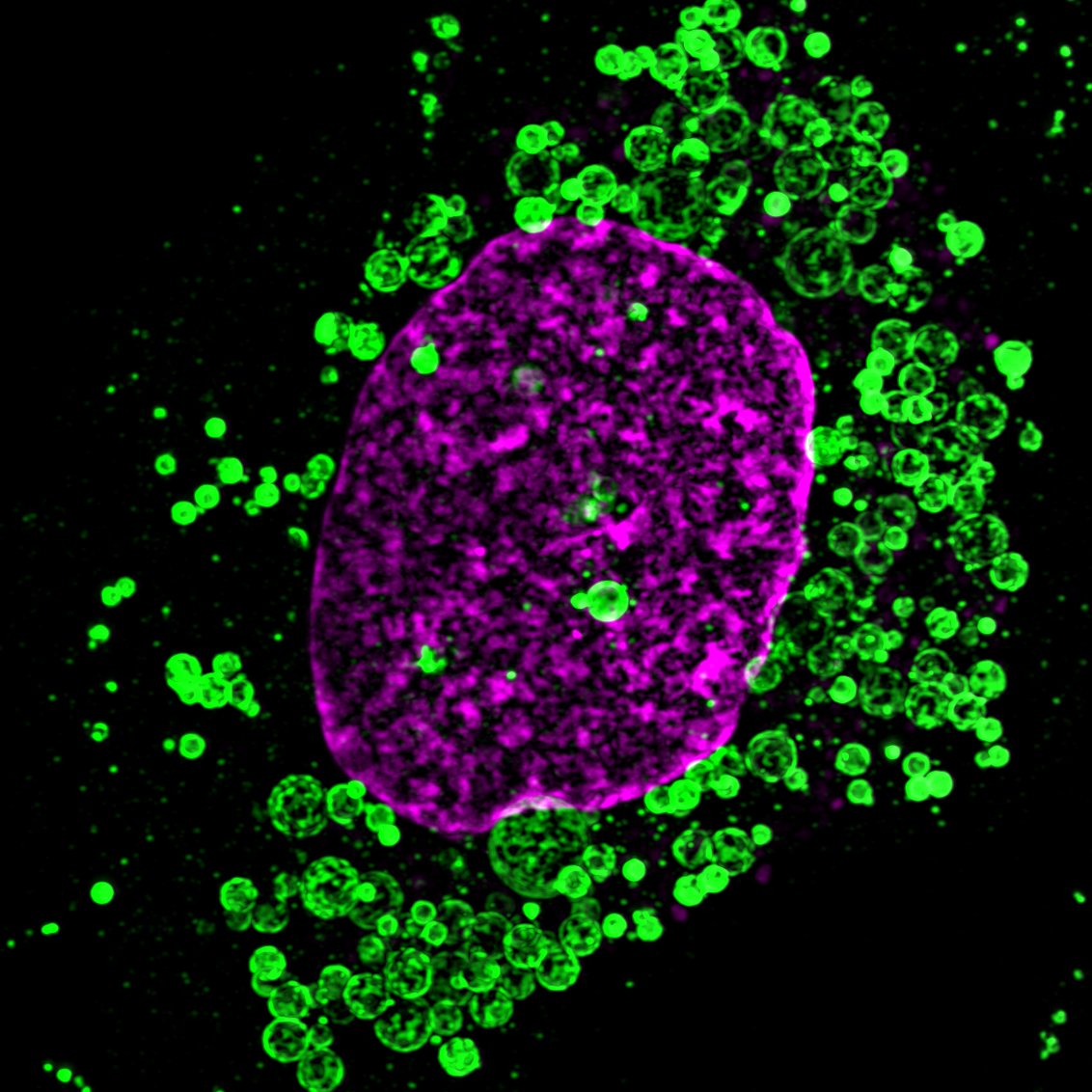 |
FH Christine (Verified Customer) (09-19-2023) | Tested on HEK293T cells stimulated by 300 uM oleic acid overnight to stimulate the formation of lipid droplets. This antibody (tested only at 1:100 so far) decorates the lipid droplets, it worked well.
|

